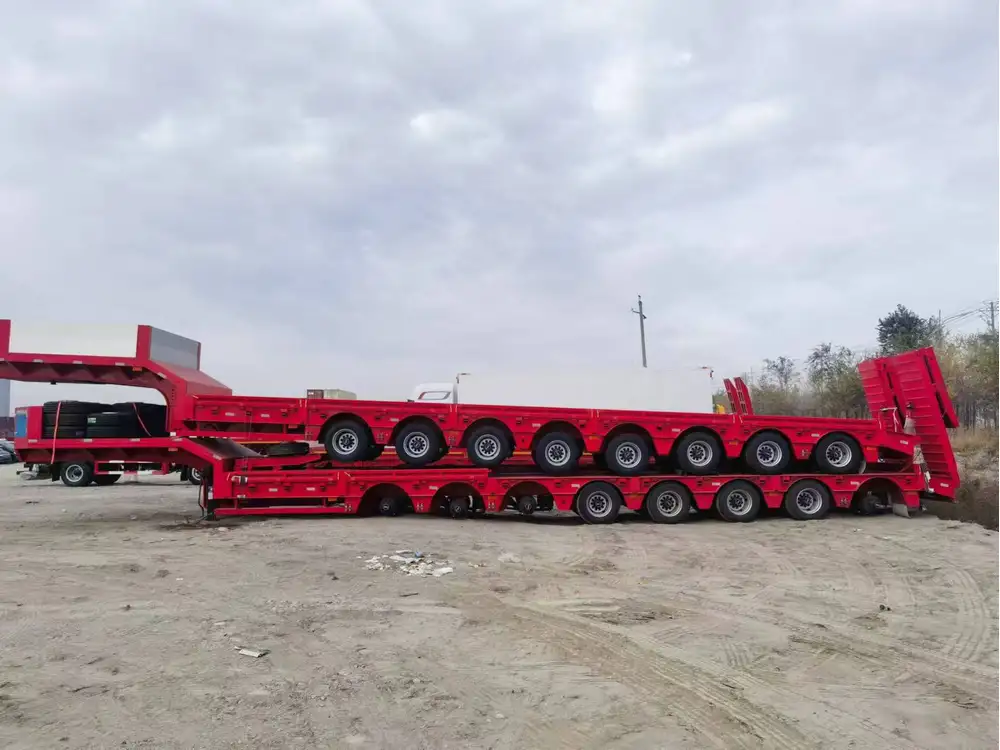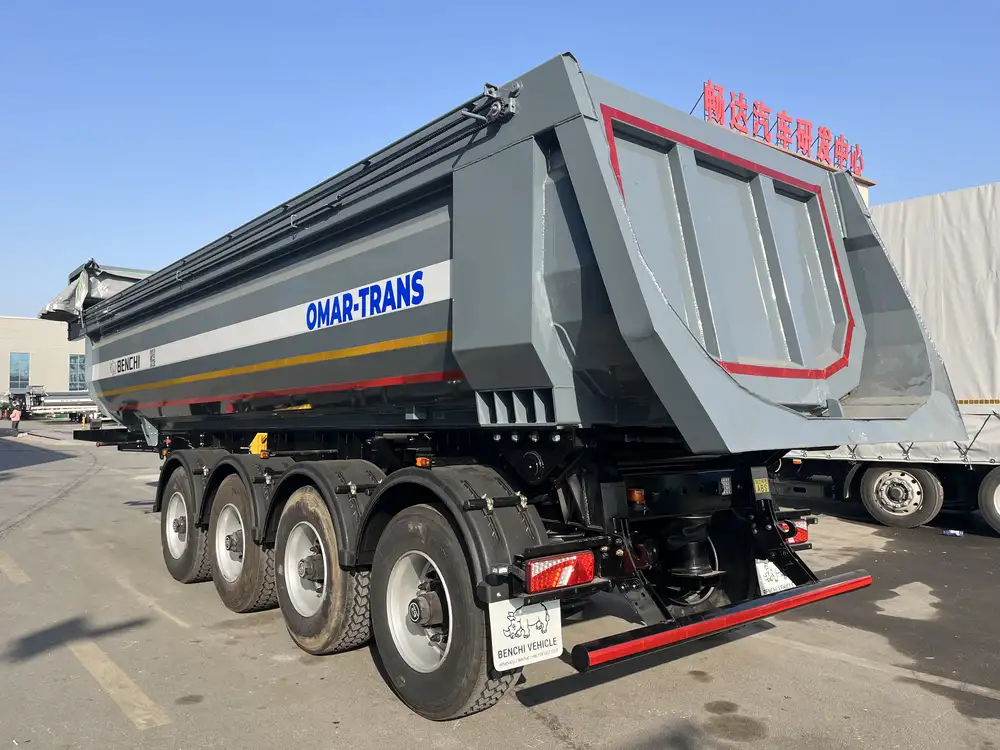Engaging the trailer brakes on a semi-trailer is a critical skill that every truck driver must master. The effectiveness of braking can influence not only the safety of the vehicle operation but also the longevity of the braking systems themselves. This guide meticulously covers the intricacies of engaging trailer brakes, enhancing your driving prowess and ensuring optimal vehicle control.
Understanding the Basics of Trailer Brakes
Before diving into the mechanics of engaging trailer brakes, it’s essential to comprehend how these systems function.
| Type of Brake | Description |
|---|---|
| Air Brakes | Use compressed air to operate. Typically used in larger vehicles including semi-trailers. |
| Electric Brakes | Operate using an electricity-based system. Common in lighter trailers. |
| Hydraulic Brakes | Utilize fluid pressure to engage brakes. Found in some specialized semi-trailers. |
The Importance of Correct Brake Engagement
Failing to engage trailer brakes correctly can lead to significant safety hazards, including:
- Loss of Control: Improperly engaged brakes can result in skidding or jackknifing.
- Increased Wear and Tear: Misalignment of brake engagement can cause excessive wear on brake components, leading to costly repairs.
- Regulatory Non-Compliance: Engaging brakes incorrectly may violate industry regulations, resulting in fines or penalties.

Step-by-Step Guide to Engaging Trailer Brakes
Pre-Trip Inspection
Before any engagement, conduct a comprehensive pre-trip inspection to ensure all components are functional.
Inspect the Brake System:
- Check the air pressure levels for air brakes.
- Examine electric connections and ensure they’re secure and intact.
- Look for leaks or damages in hydraulic lines, if applicable.
Test the Brake Lights:
- Verify that the brake lights function correctly. Ensure that other drivers can see your braking action.
Engaging the Trailer Brakes
Here is a detailed procedure for engaging the trailer brakes effectively:
Initial Setup:
- Ensure your vehicle is on a stable surface and at a complete stop to prevent any unintended movement during brake engagement.
Activate the Air Supply (for air brakes):
- Locate the Air Supply Valve: This is typically on the dashboard. It may be color-coded, often red for the trailer brake.
- Engage the Valve: Pull or push the valve according to your vehicle’s specifications. This action sends compressed air to the trailer brakes.
Use the Brake Control:
- Locate the Brake Control Lever: Usually situated near the steering wheel, it allows you to engage the brakes based on the load on the trailer.
- Gradual Engagement: Apply the lever slowly to avoid sudden stops, which can lead to jackknifing.
Control Adjustment Impact Light Trigger Gradual deceleration Full Pull Immediate stop, potential for skidding Monitor Trailer Response:
- Watch the trailer, ensuring it remains aligned with the cab without swerving or shifting.
Adjust and Fine-Tune:
- If you notice that the truck and trailer are misaligned or the brakes are not responding as expected, adjust the brake control until you achieve a smooth and controlled engagement.

Engaging Electric Brakes
For semi-trailers equipped with electric brakes, the process differs slightly:
- Ensure the Vehicle is Parked: Engage the truck’s parking brakes first.
- Activate the Brake Controller: This is often mounted on the dashboard, similar to the air brake control.
Control Adjustment: Use the manual control to test engagement. Gradually adjust to meet the needs of your trailer load.
Electric Brake Control Setting Low Setting Light Load High Setting Heavy Load, steep inclines
Testing Engagement
After engagement, it’s crucial to test the effectiveness of the trailer brakes:
- Rolling Test: Slowly roll forward and gently press the brake control. The trailer should stop without any jerks.
- Road Test: When safe, conduct a brief test drive to ensure that the brakes engage smoothly while moving.
Common Problems and Solutions
Identifying and solving potential issues is vital for maintaining safety:
| Problem | Possible Causes | Solutions |
|---|---|---|
| Unresponsive Brakes | Air leak, malfunctioning components | Inspect connections, replace faulty parts |
| Spongy Brake Feel | Low air pressure or hydraulic fluid | Check air compressor or fluid levels |
| Uneven Brake Wear | Improper engagement or alignment | Regular inspections, correct alignment practices |
| Overheated Brakes | Continuous application or faulty system | Allow for cooling, inspect system for defects |

Preventative Measures
Implementing regular maintenance checks can significantly mitigate issues:
- Routine Inspections: Schedule routine maintenance checks for your braking system.
- Training Sessions: Regularly train drivers on proper trailer brake engagement techniques.
- User Manuals: Keep a copy of the trailer and vehicle manuals handy for quick reference.
Conclusion: Mastering Trailer Brake Engagement
Understanding how to effectively engage trailer brakes is paramount for ensuring safe, controlled, and efficient driving. By mastering each component of this process—from inspecting the system to understanding the various brake types and their specific needs—you position yourself as a responsible and skilled operator in a demanding industry. Ensuring that each of your drivers is well-versed in these techniques not only promotes safety but also enhances the operational efficiency of your semi-trailer fleet.
Additional Resources
To further assist you in mastering trailer brake engagement, consider the following resources:
- Federal Motor Carrier Safety Administration (FMCSA): Offers guidelines and safety regulations for commercial driving.
- The Commercial Vehicle Safety Alliance (CVSA): Provides insights into best practices and compliance materials.
- Manufacturer’s Manual: Always refer to your specific vehicle’s manual for tailored guidance on brake systems.
Understanding these principles not only boosts operational safety but also cultivates a culture of diligence in the trucking industry. Whether you’re an owner-operator or part of a larger fleet, focusing on effective braking is not merely a skill—it’s an obligation to yourself, your cargo, and the roads you share with others.



